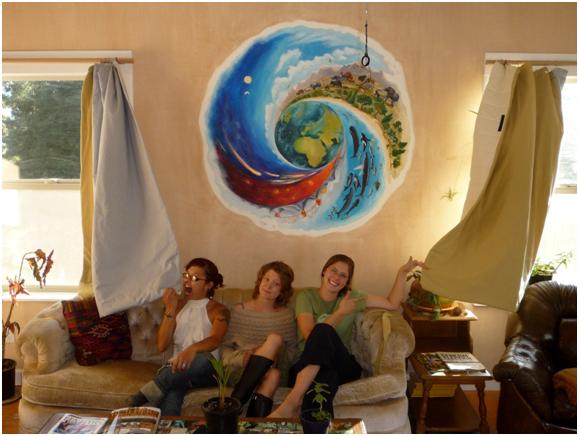To learn why thermal curtains are awesome to begin with, how much money they could save you, or understand how they work, check out this similar page: CCAT is great. This more detailed procedure will provide extended benefit for those who learn better with diagrams and words than with the following photographs.
If you live in the frigid dorms or just need a quick fix to a cold apartment or house (or attic or basement...) check out Quick and Dirty Thermal Curtains.
The Necessary Materials
- Insulative batting material (obtained through CCAT at Humboldt State University or ordered from Warm Windows.
- Decorative cover material
- Curtain rod or wooden dowel
- Curtain rod brackets or dowel brackets
- Curtain rings or shower curtain rings
- Velcro
- Sewing machine, thread, pins, scissors, tape measure
- Grommet punch set with grommets
The Procedure
And Voila!

Video Demonstration
Tips
Measurement Considerations Before fabricating thermal curtains for your home, you need to decide which windows you want to cover. In the northern hemisphere, north-facing windows and large windows release the most heat, therefore covering these windows will have the biggest impact. You need to measure the height and width of the windows. Be sure to keep in mind that you want your curtains to extend beyond the window in order to get best results.
Also note that the cold air on the window side of the curtains will flow downward, and the warm air inside the house will flow upwards. Because of this, you can help to prevent this cycling of the air (and thus cold drafts) by installing a pelmet above your curtains. The pelmet doubles to hide the curtain fittings (rail, etc.).
Ending Note
This page was created by Kelly Muth of Eng 114 at Humboldt State. The other group members are Maria Hester, Heidi Halverson and Kelsey Knutson. Without them, the thermal curtains would not have been as awesome as they are. Thanks for everything! And a special thanks to Lonny Grafman, who taught an excellent class and taught me more than I possibly could know about whole earth engineering.